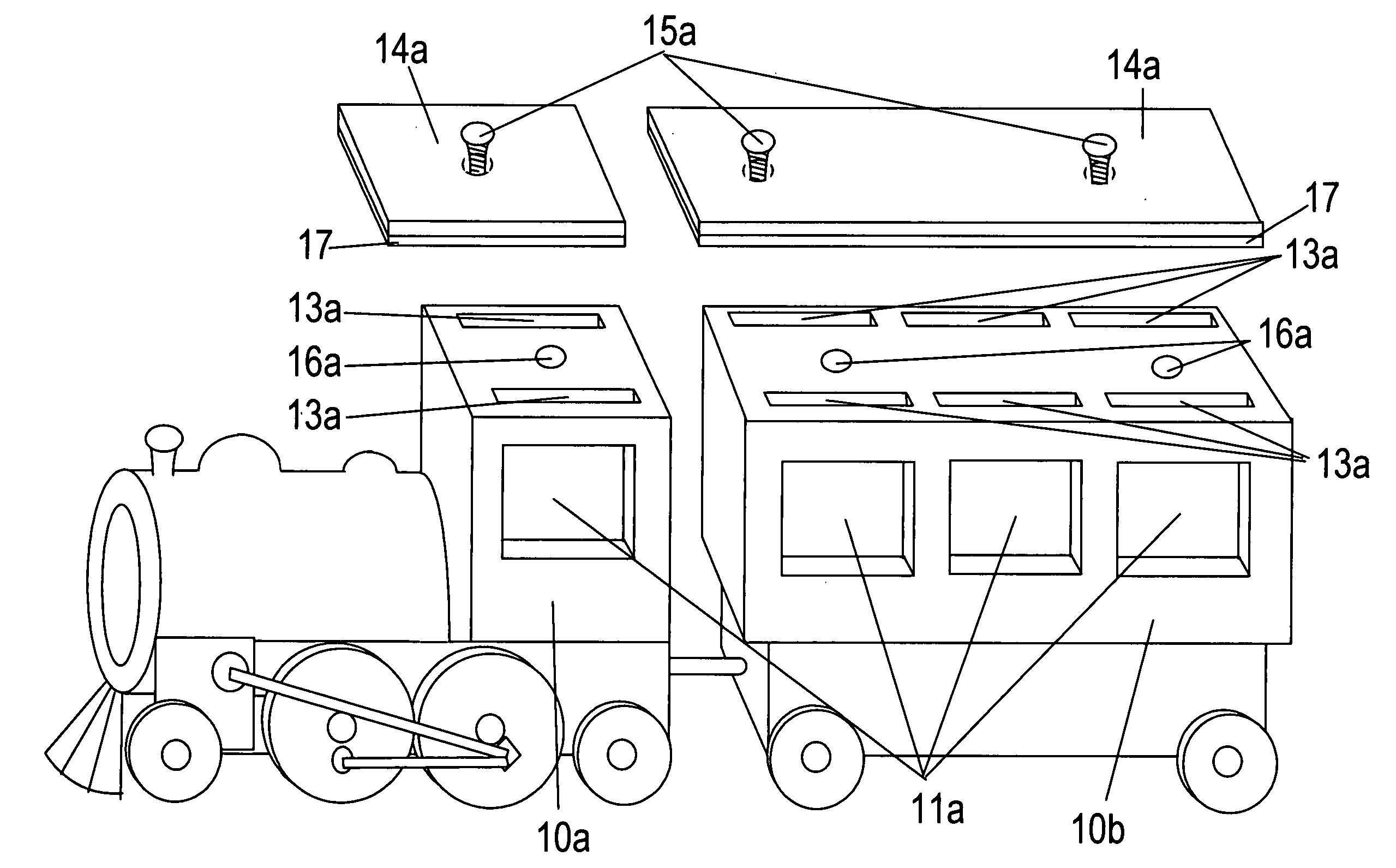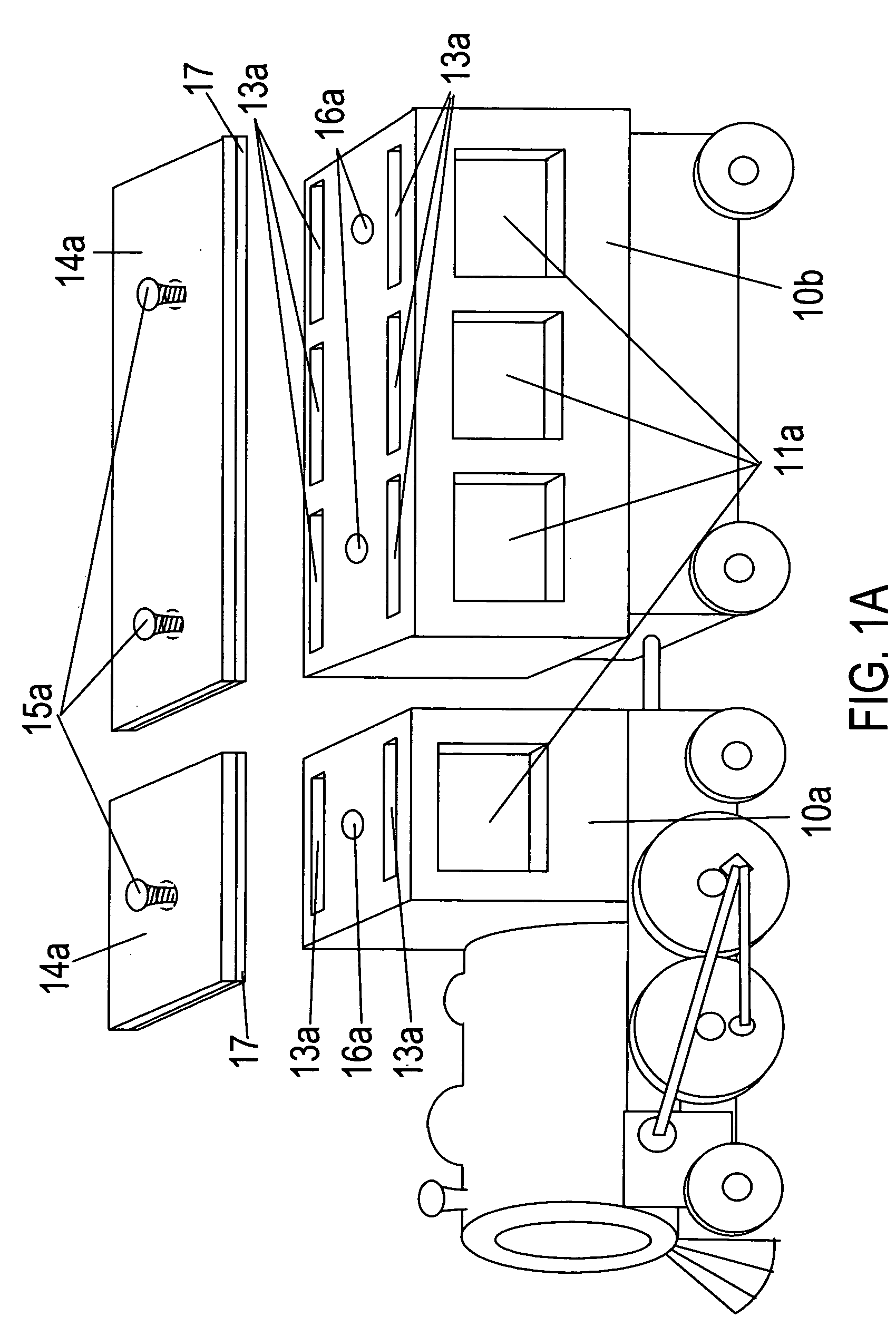Model toy combined with one or more pictures
a model toy and picture technology, applied in the field of model toys, can solve the problems of not being able to visually realistically depict photographs of other animate objects, display globes are typically considered fragile and unsuitable for play, and cannot model real-life inanimate objects
- Summary
- Abstract
- Description
- Claims
- Application Information
AI Technical Summary
Benefits of technology
Problems solved by technology
Method used
Image
Examples
Embodiment Construction
—PREFERRED EMBODIMENT—FIGS. 1A and 1B
[0098] A preferred embodiment of the structure for incorporating a picture into a model toy is illustrated in FIG. 1A (front, perspective view) and FIG. 1B (front, perspective, dissected components). In FIG. 1A, a toy train is used as an example of the toy, showing both a locomotive toy body (10a) and a train passenger car or coach toy body (10b). Transparent window openings (11a) are in locations where windows would typically be found on locomotives and passenger cars. Picture slots (13a) are located above and extend behind transparent window openings (11a). Removable enclosures (14a) have rubberized or foam layer (17) on one side, and may be attached to toy bodies (10a and 10b) with screws (15a). Screw holes (16a) are located within toy bodies (10a and 10b).
[0099]FIG. 1B (front, perspective, dissected components) further illustrates the above described model window picture-viewing structure (11). At the front of the structure is integrated win...
PUM
 Login to View More
Login to View More Abstract
Description
Claims
Application Information
 Login to View More
Login to View More - R&D
- Intellectual Property
- Life Sciences
- Materials
- Tech Scout
- Unparalleled Data Quality
- Higher Quality Content
- 60% Fewer Hallucinations
Browse by: Latest US Patents, China's latest patents, Technical Efficacy Thesaurus, Application Domain, Technology Topic, Popular Technical Reports.
© 2025 PatSnap. All rights reserved.Legal|Privacy policy|Modern Slavery Act Transparency Statement|Sitemap|About US| Contact US: help@patsnap.com



